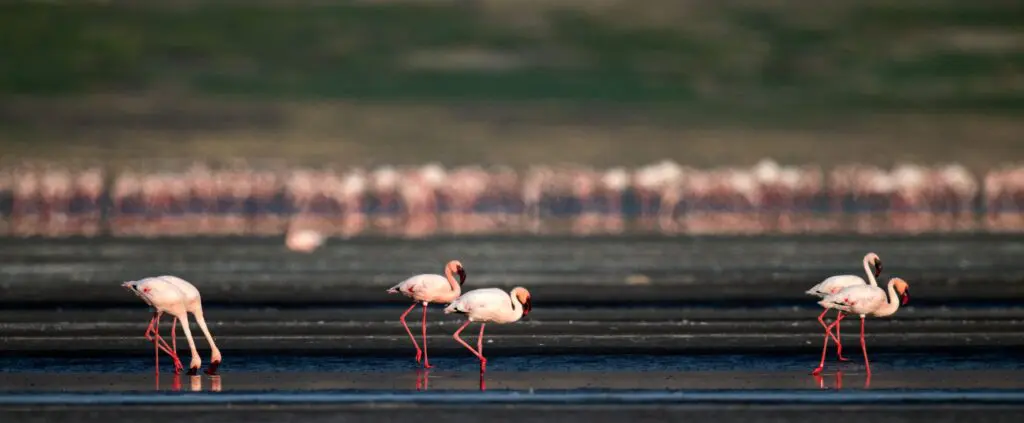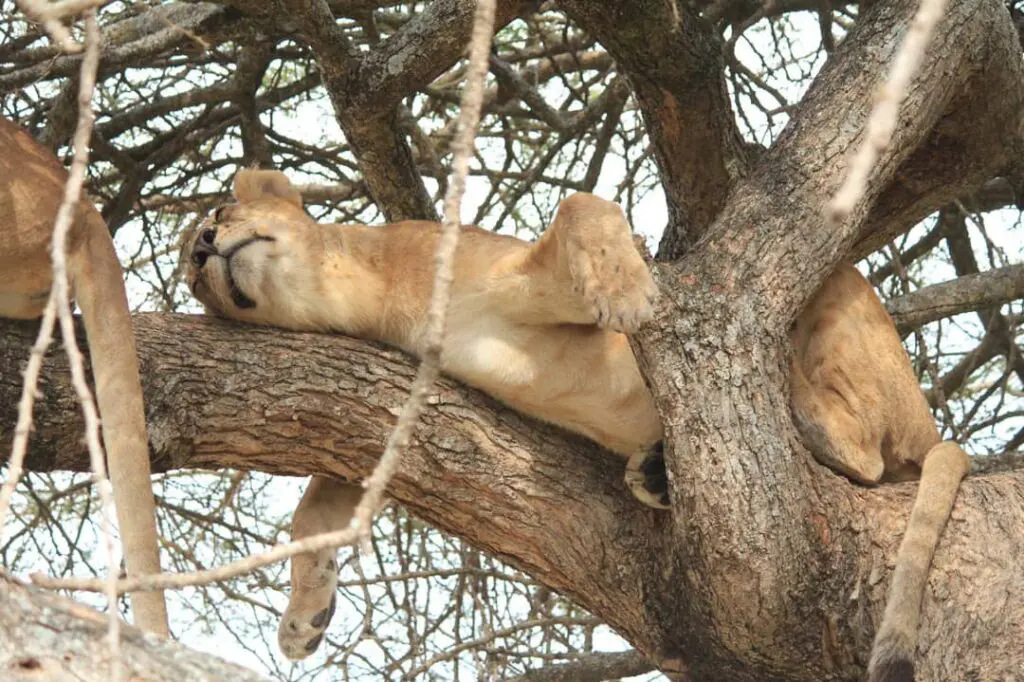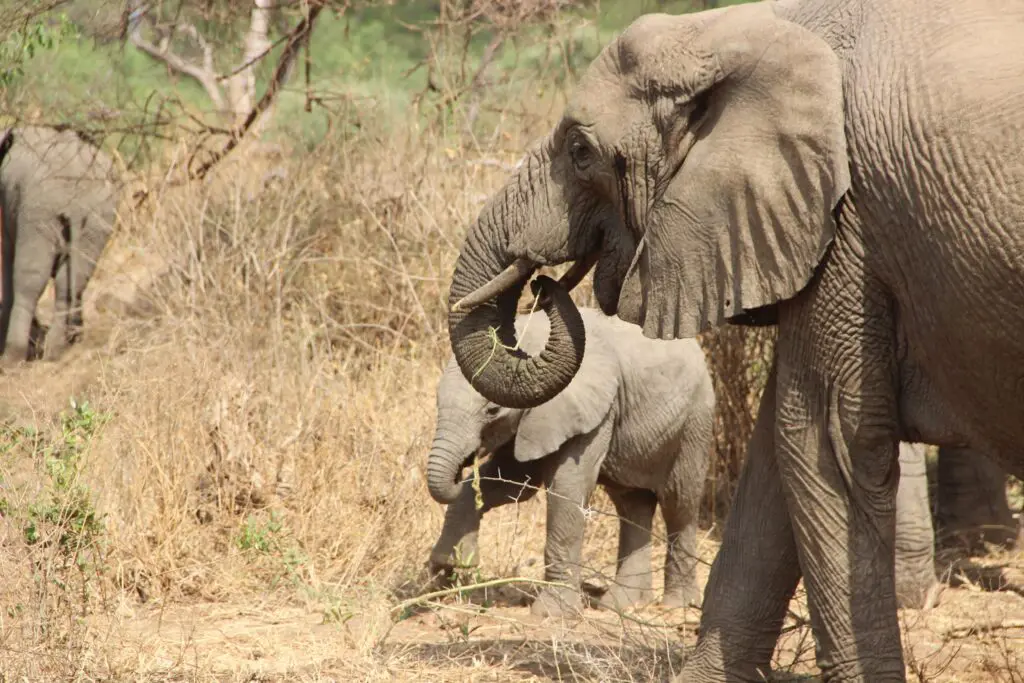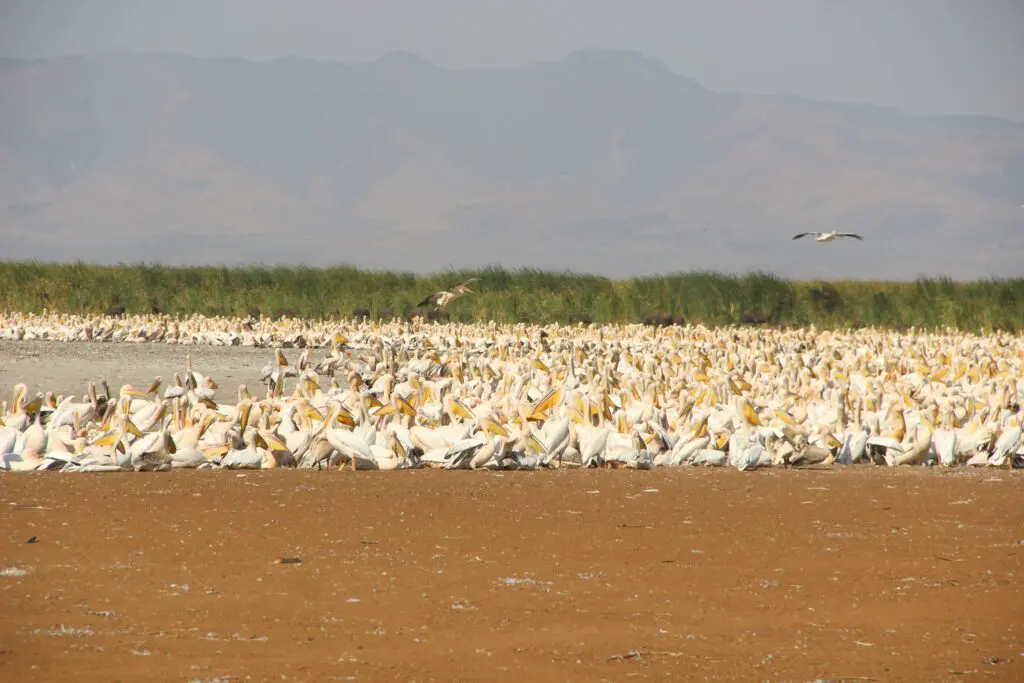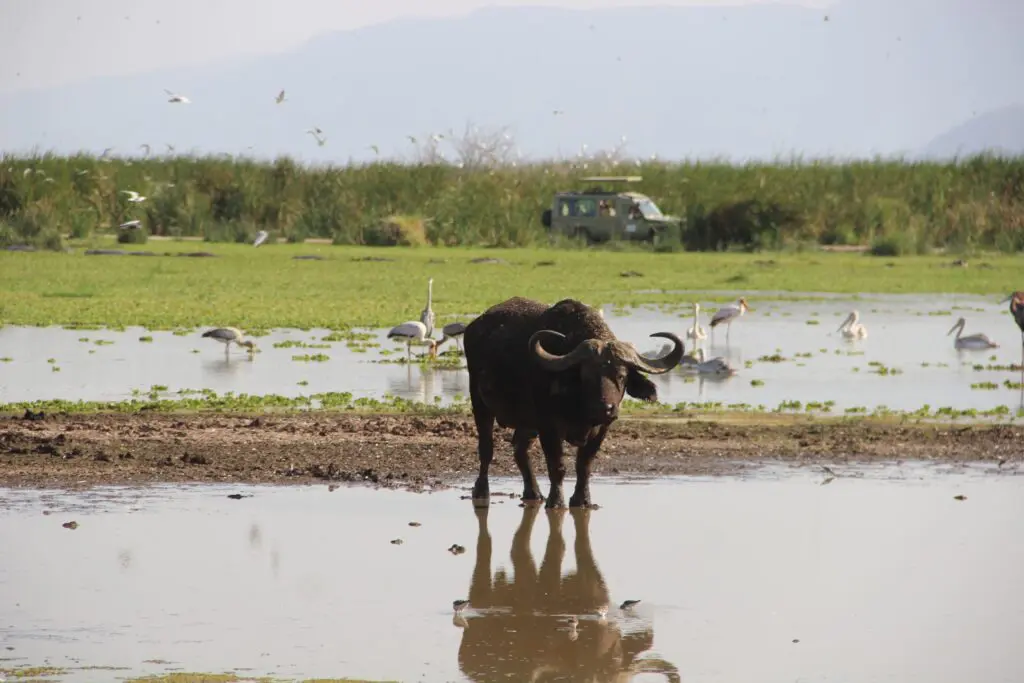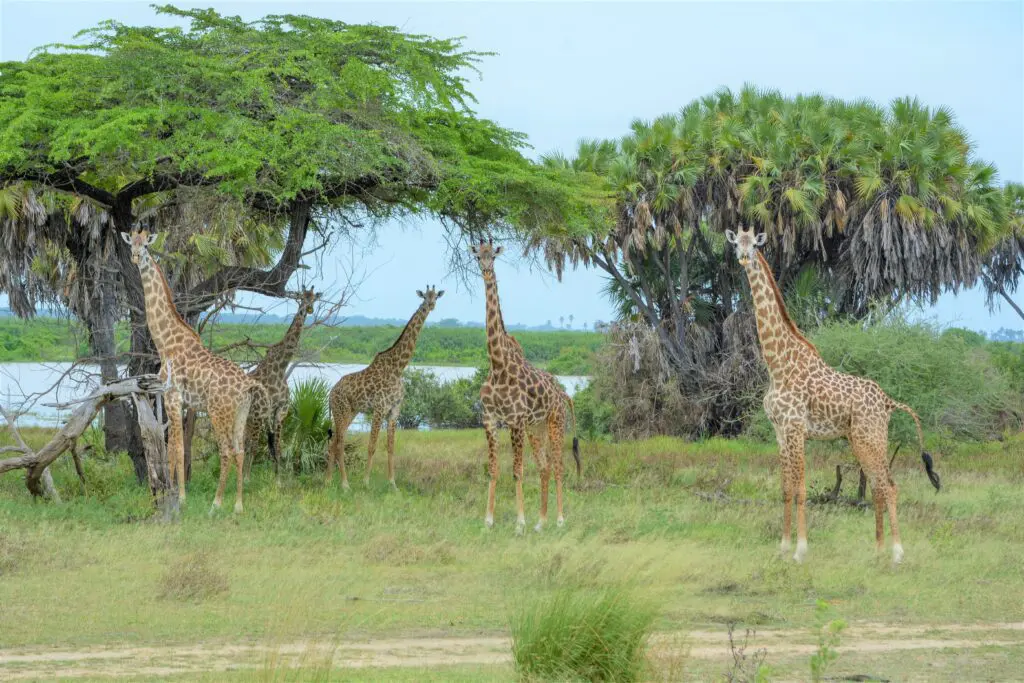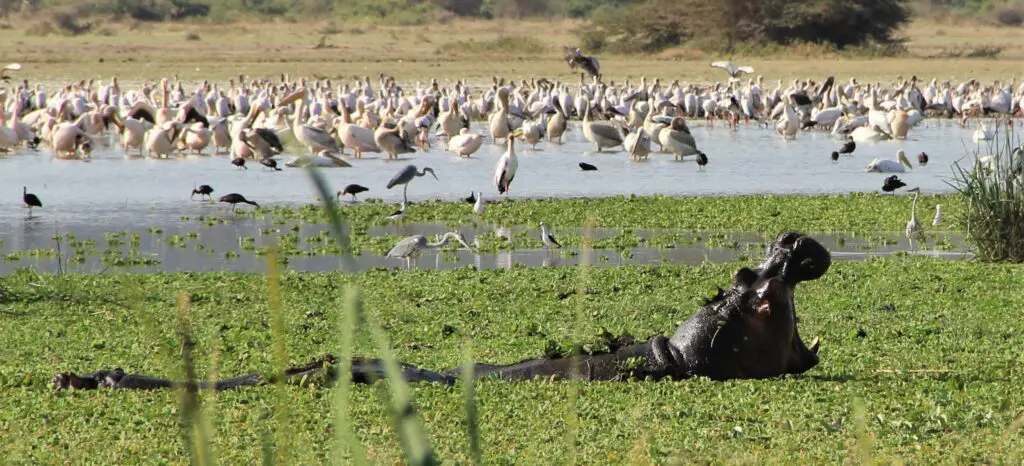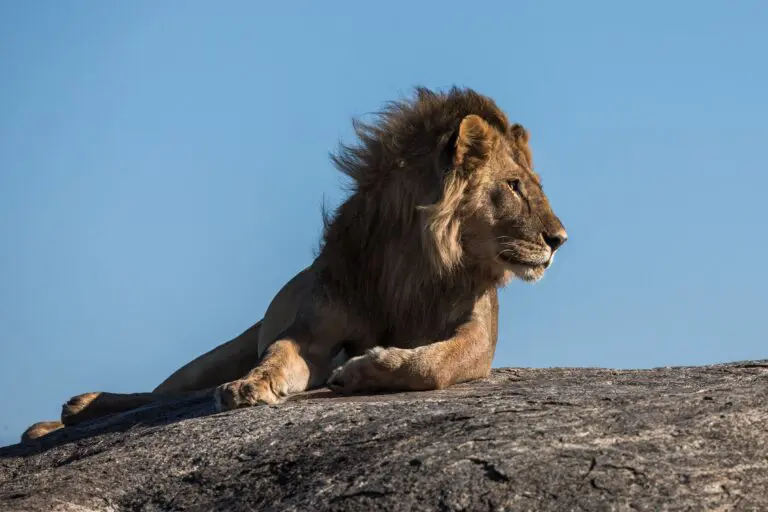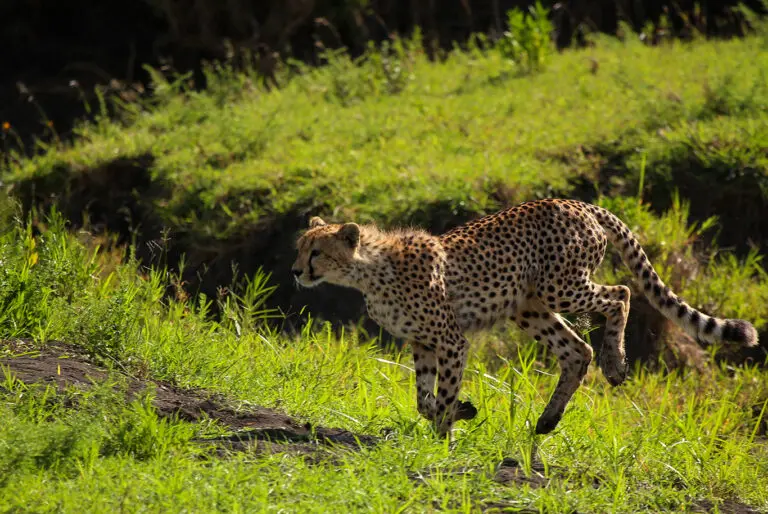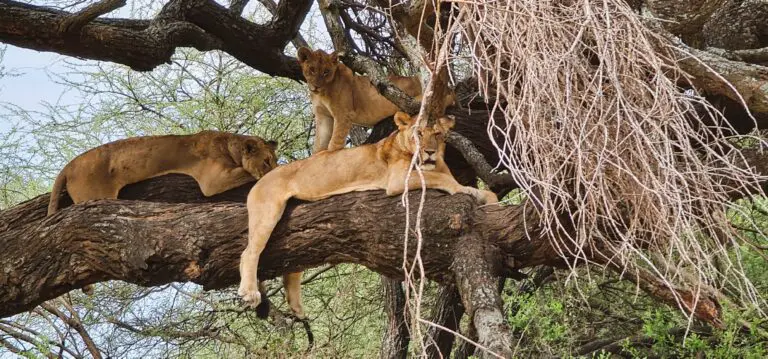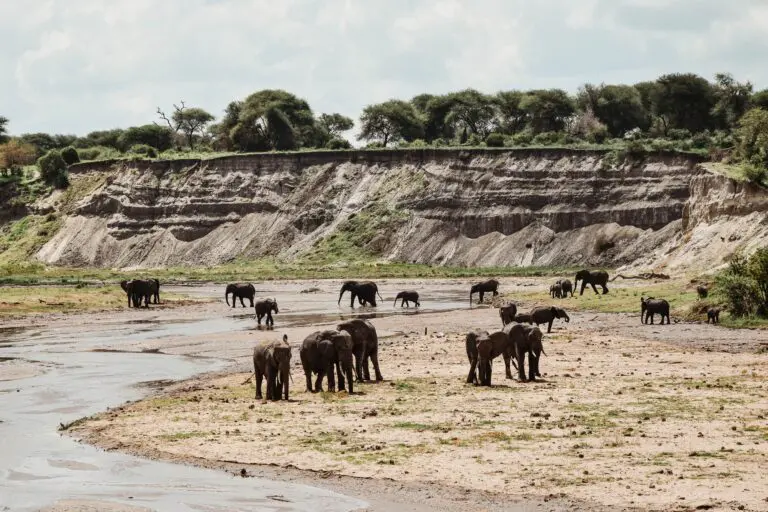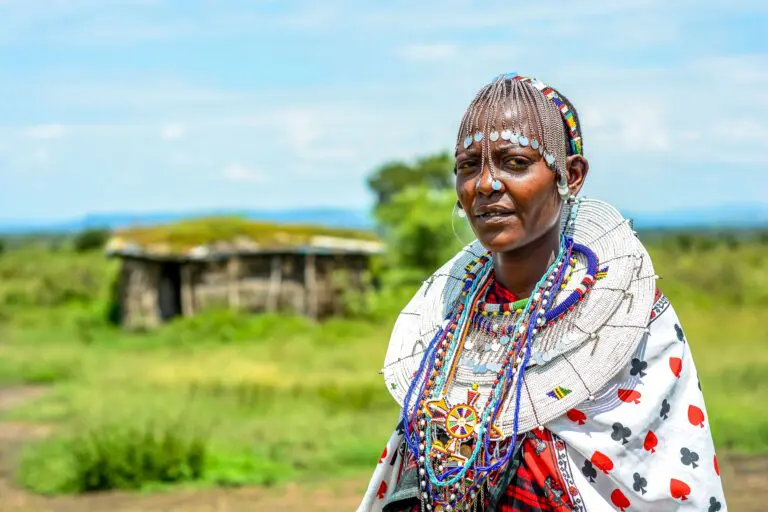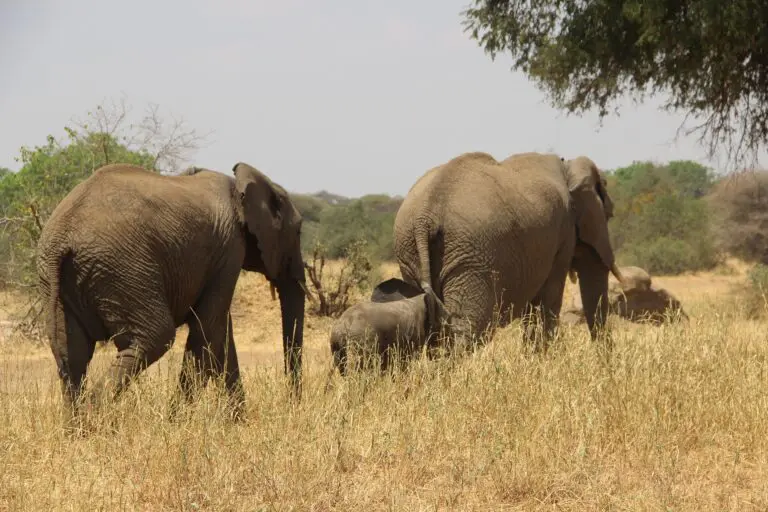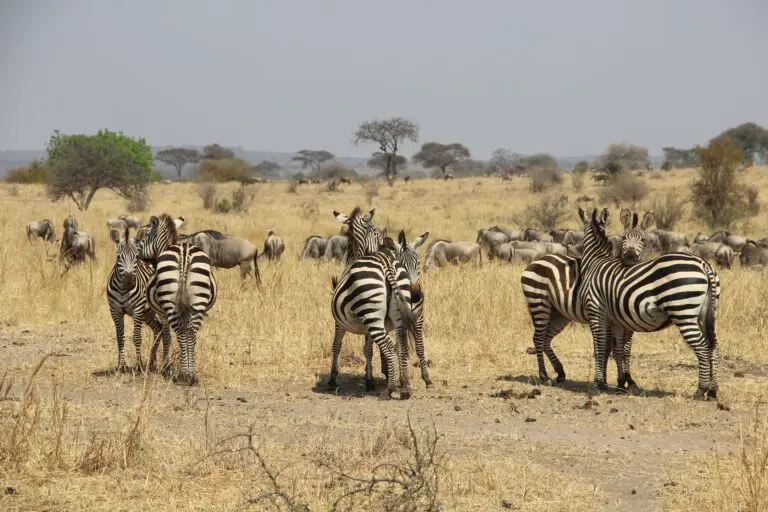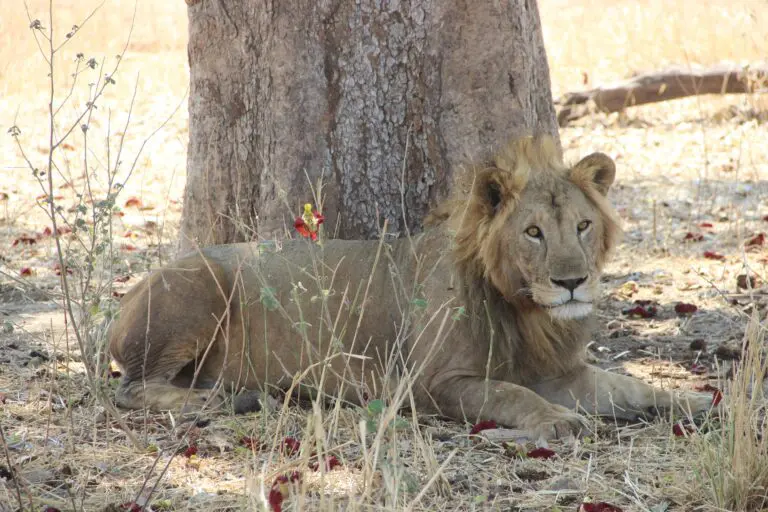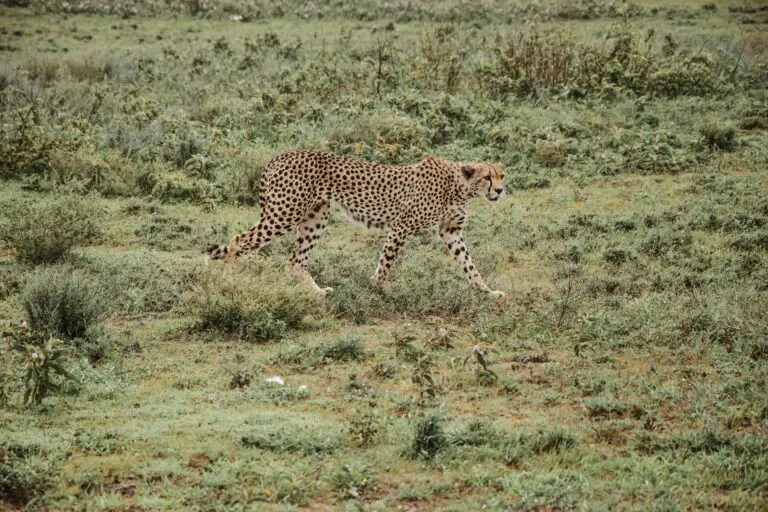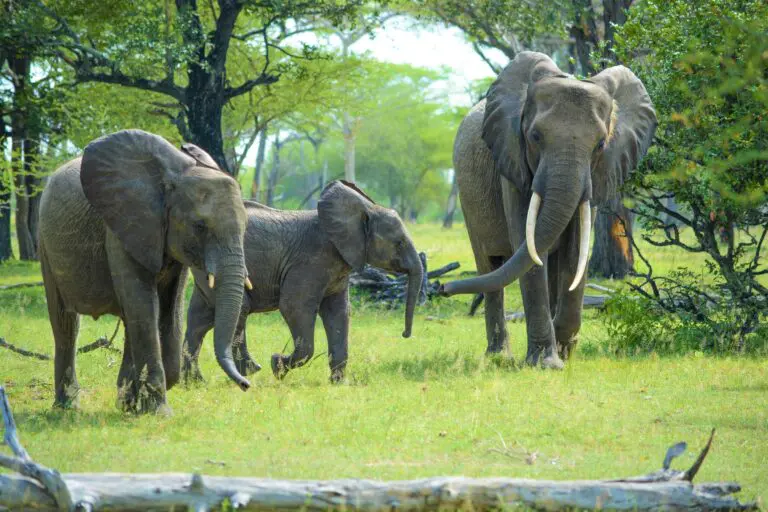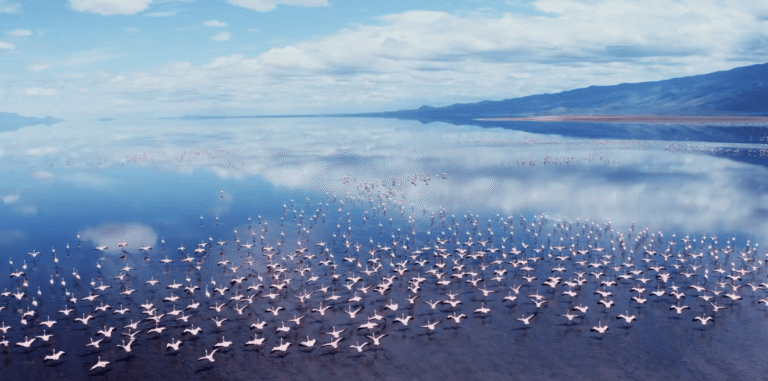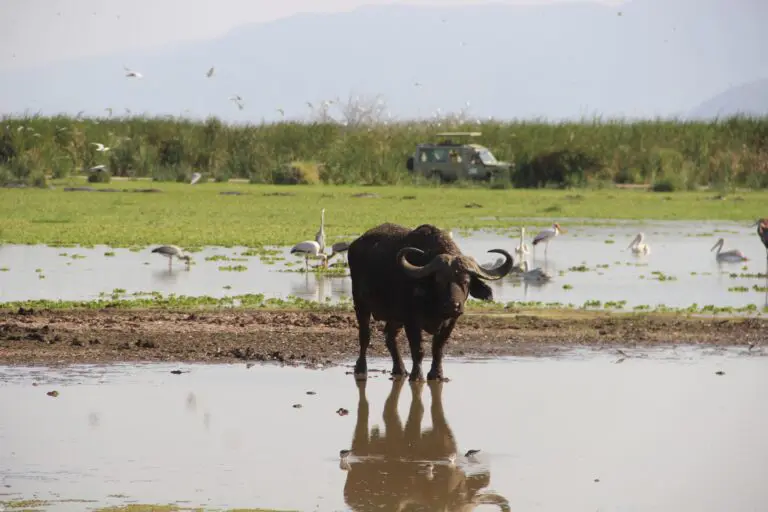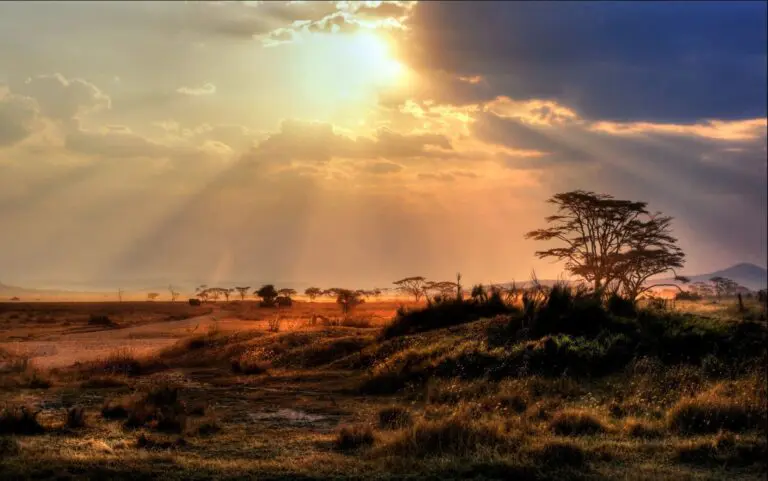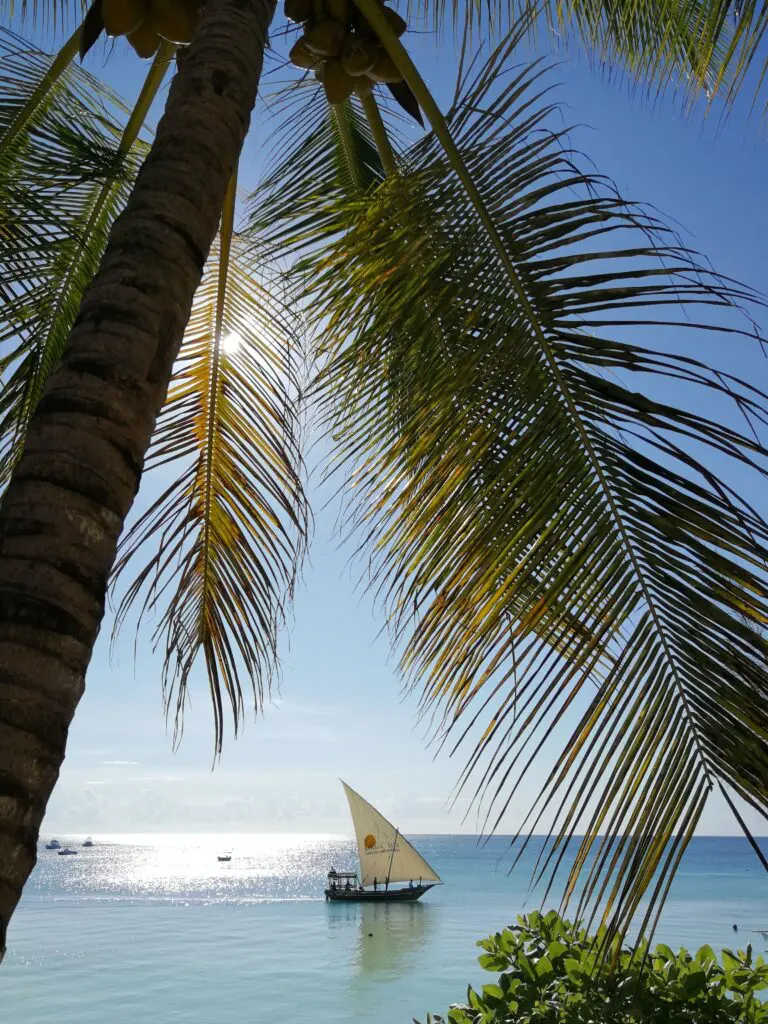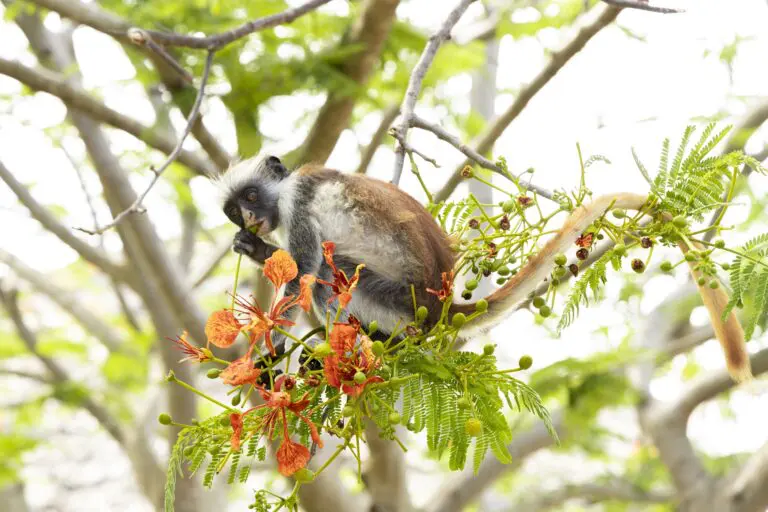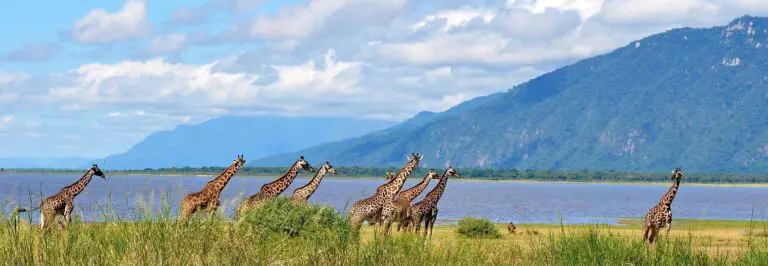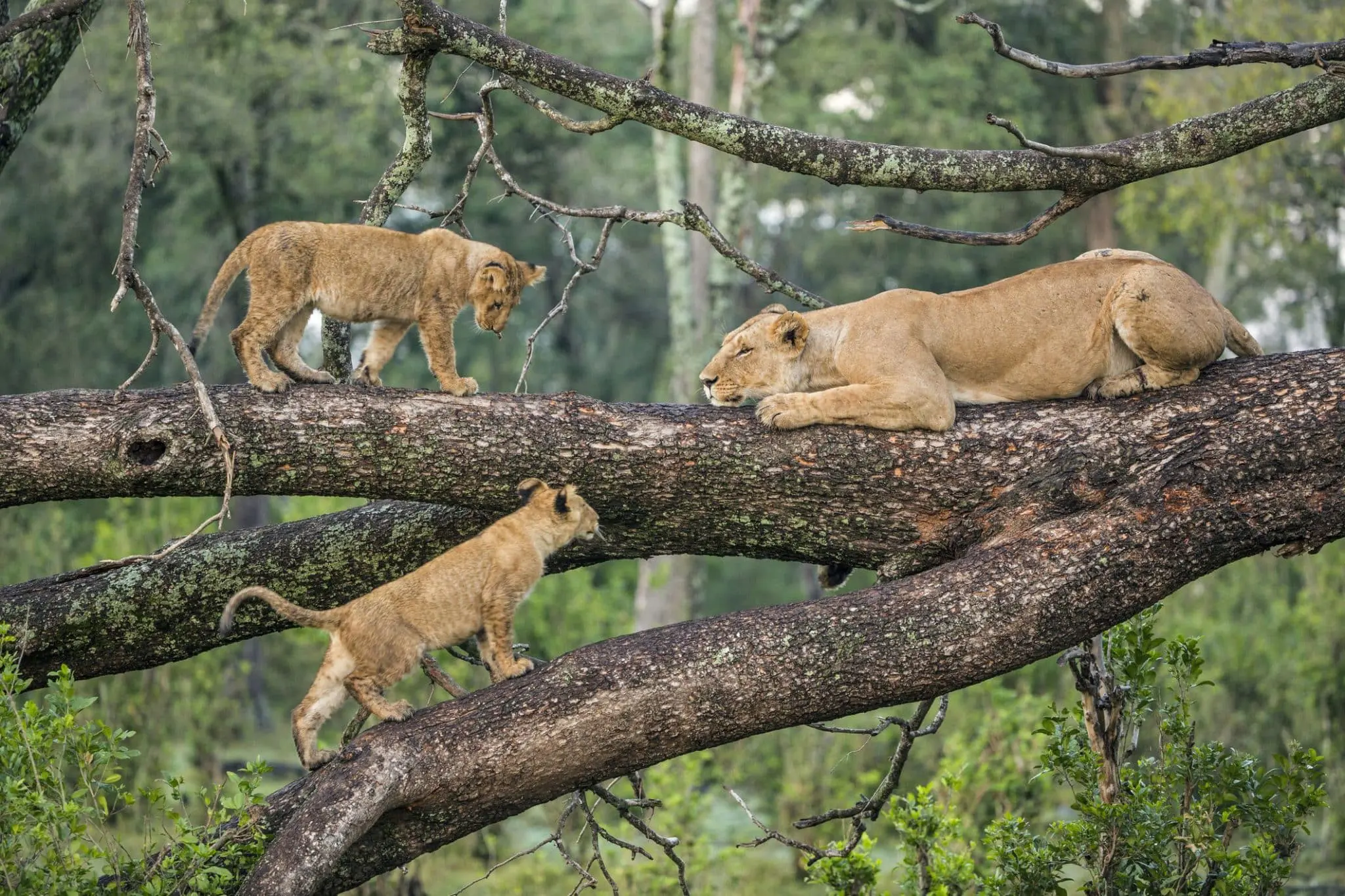
Lake Manyara National Park
Tree-climbing lions in Lake Manyara
Lake Manyara National Park is an underrated gem when it comes to safari parks in Tanzania. This park offers great ecological diversity in a compact area. The lake attracts many birds that thrive on the water. More than 400 species have been identified and one of the highlights are the thousands of flamingos.
From the park’s main entrance, the road winds through an area of pristine forest. On the grassy shores of the lake you can see wildebeest, giraffes, zebras and the great buffalo grazing throughout the day. The park also offers excellent opportunities to spot hippos. The mahogany and acacia trees are inhabited by the famous tree-climbing lions. With a little luck, you can see them lazing on a tree branch!
Wildlife you can spot:
Elephants | Lions | Leopards | Giraffes | Baboons | Waterbucks | Impalas | Warthogs | Hippos | Crocodiles | Bushbucks | Dikdiks | Wildebeest | Zebras | Hyenas | Flamingos | Pelicans | Ospreys
Wildlife in Lake Manyara National Park
Lake Manyara National Park, located in Tanzania, is known for its diverse and abundant wildlife. The park is home to numerous animal species, including elephants, lions, leopards, giraffes and baboons. One of the park’s most striking features is the presence of tree-climbing lions that often nest in the acacia trees.
In addition to large mammals, Lake Manyara NP also offers a paradise for bird lovers, with more than 400 species of birds, including flamingos, pelicans and ospreys found along the shores of the beautiful lake. The diversity of wildlife and the scenic beauty of the lake make a visit to Lake Manyara National Park an unforgettable experience for nature and safari enthusiasts.
Practical information
Location: Lake Manyara National Park is located in the northern region of Tanzania, about 126 kilometers southwest of Arusha.
Entrance fee: The entrance fee may vary depending on your age and period of your visit. This entrance fee (Park fee) is always included in our tours.
Best time to visit: The dry period December to April and June to October are generally the best periods for wildlife safaris, as animals tend to gather at water sources. However, the park is good to visit all year round, with many chances of spotting wildlife.
Climate: The climate in this area is generally hot and humid, but temperatures can vary depending on the season.
Round trips
Check out our inspiration trips to Tanzania and/or Zanzibar that can be customized.

